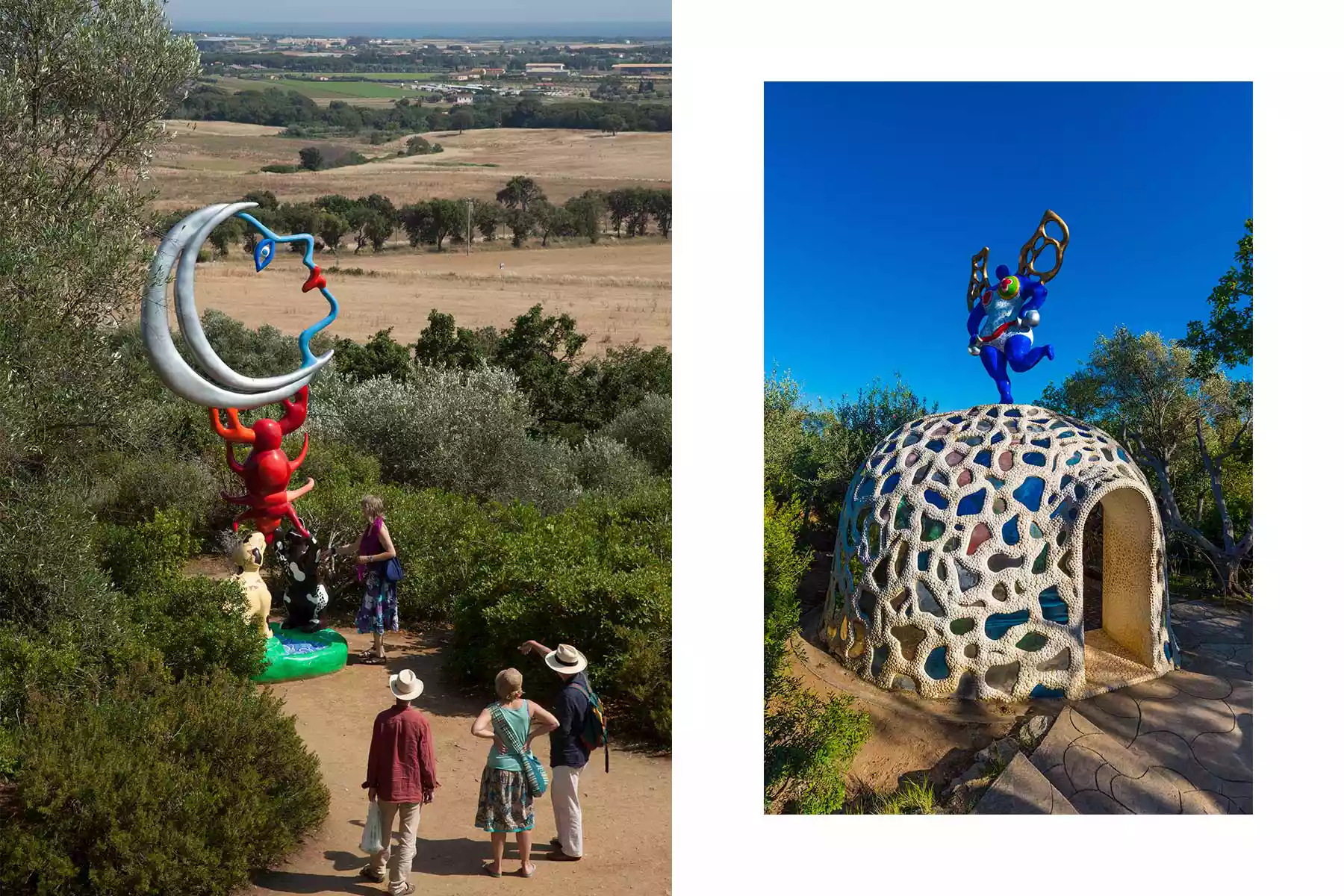Summary
Niki de Saint Phalle’s Tarot Garden: A Journey Through Art and Imagination
Discovering Niki de Saint Phalle’s Tarot Garden
The site is artist Niki de Saint Phalle’s career-defining masterpiece.
Two and a half hours’ drive south of Florence, we finally saw the tips of the sculptures on a hilltop outside Garavicchio, a medieval village in southern Tuscany. Flashes of blue, green, white, and red caught my eye, the sun glinting off mirrored tiles. I held my breath as we made our way up the drive. I had read extensively about Niki de Saint Phalle’s tarot garden, so seeing it in real life felt as fantastical as its very existence.
Artistic Inspirations and Influences
Tarot cards are designed not to predict the future but to subtly seed the subconscious. This allure has long fascinated artists, inspiring surrealists like Leonora Carrington and Salvador Dalí. Moreover, Saint Phalle elevated this concept, transforming tarot imagery into vibrant sculptures that reside in the world beyond the cards.
The project, which opened in 1998 on an ancient Etruscan site, was born from a dream in which the French-American artist envisioned a sculpture garden akin to a tarot deck. “If life is a game of cards,” she wrote, “we are born without knowing the rules. Yet we must play our hand.”
Experiencing the Sculptures
Beginning in 1978, Saint Phalle worked alongside a diverse team of artists and local volunteers to create these 22 major arcana sculptures across 14 acres of land owned by the Caracciolo family. They constructed iron frames, coated them in cement, and adorned them with locally produced tiles in bold colors and reflective surfaces. Despite suffering from rheumatoid arthritis toward the end of her life, Saint Phalle continued to envision new ideas for her garden, a testament to her dedication. At the time of her passing in 2002, she was planning a maze, describing the garden as “my husband, my love, my everything.”
The sculptures draw inspiration from various cultural and artistic sources, including the sinuous mosaics of Antonio Gaudí’s Parc Güell in Barcelona and the 16th-century Gardens of Bomarzo in Italy. Saint Phalle interpreted traditional tarot imagery while also allowing her imagination to flourish, resulting in a vibrant display of bizarre, monumental forms enveloped in a typically Tuscan landscape.
Additionally, these sculptures reference numerous world religions and cultures—Egyptian, Mesopotamian, kabbalah, and Christianity—melding them into symbols of rebirth and primal force. They are designed for interaction, inviting visitors to touch and engage with the art. For example, my partner, Ben, and I thought visiting the garden would be ideal for our three-year-old, Julien. However, upon entering, he chose to explore the gravel path instead of the sculptures, perhaps expressing his own freedom to engage with the space.
Navigating Through Art
Upon entering, I was captivated by The Magician and the High Priestess, where water poured dramatically from their mouths, while the Wheel of Fortune—a kinetic creation by Saint Phalle’s husband, Swiss sculptor Jean Tinguely—spun water in all directions. These figures embody different energies, challenging viewers to ponder the potentials of unity beyond duality. Nearby, Strength depicted a fiery-haired woman confronting a vibrantly tiled dragon, leaving me to wonder about her intentions.
Continuing my exploration, I came upon Justice, depicted as a voluptuous figure with scales for breasts, guarding a dungeon-like installation of Injustice. Next, I was entranced by the Tree of Life, its intricacies suggesting a deeper key to mythologies waiting to be deciphered.
An unexpected message from Ben revealed Julien joyfully navigating the steps, confirming our choice to bring him to this artistic haven. I made my way past The World, where a woman rests daintily atop a golden egg surrounded by a snake, creating a protective atmosphere through its disco-ball reflections.
Then, I entered the blue-haired Empress/Sphinx, a large structure where Saint Phalle had lived during the garden’s construction. Its colossal features encompassed a kitchen and a bedroom, framed by glass tiles reflecting the vibrant surroundings.
The essence of tarot decks lies in their ability to be reshuffled, allowing meanings to shift based on their arrangement. Similarly, in Saint Phalle’s interactive garden, visitors’ journeys dictate the sequences of encounters, lending new interpretations to the stationary sculptures.
My exploration blended journalistic curiosity with familial love, reminiscent of Saint Phalle’s own push and pull. In the comforting shelter of the Empress, I captured reflections of my surroundings while also taking moments to savor the world for myself, before returning my focus to my child’s discoveries.
I contemplated the cards metaphorically drawn during this visit—Strength, The Tree of Life, The World, The Empress. While their essence may remain partially subconscious, I find happiness in the realization that they continue to shape my experiences moving forward.





